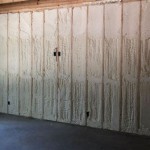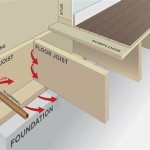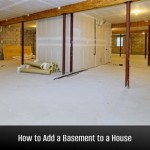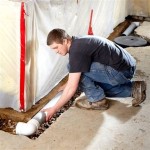Essential Aspects of Vapor Barrier on Basement Floor
Vapor barriers play a crucial role in maintaining a healthy and comfortable basement environment. They prevent moisture vapor from seeping into the living space, which can lead to condensation, mold growth, and other moisture-related issues. Understanding the essential aspects of vapor barrier installation on a basement floor is vital for ensuring its effectiveness and durability.
1. Material Selection
The choice of vapor barrier material depends on factors such as the moisture level in the basement, the presence of hydrostatic pressure, and the budget. Common materials include:
- Polyethylene Sheeting: A cost-effective option suitable for basements with low moisture levels.
- Polyvinyl Chloride (PVC) Sheeting: Stronger and more durable than polyethylene, but more expensive.
- Ethylene-Propylene Diene Monomer (EPDM) Sheeting: Highly flexible and resistant to puncture, but also the most expensive.
2. Installation Method
Vapor barriers can be installed using different methods, including:
- Floating: Simply laying the vapor barrier on top of the subfloor without attaching it.
- Taping: Overlapping the edges of the vapor barrier and sealing them with tape.
- Adhesive: Applying adhesive to the vapor barrier and attaching it directly to the subfloor.
3. Overlap and Sealing
To ensure complete coverage and prevent moisture penetration, it's essential to overlap the vapor barrier by at least 6 inches at the seams. All overlaps should be sealed thoroughly using either tape or adhesive. Leaving gaps or unsealed areas can compromise the effectiveness of the vapor barrier.
4. Edge Treatment
The edges of the vapor barrier should be extended up the walls by at least 6 inches above the top of the concrete. This prevents moisture from wicking up through the wall cavity and into the living space. The edges can be sealed to the walls using caulk.
5. Vapor Barrier Performance
The performance of a vapor barrier is measured by its perm rating. A perm is a unit of measurement that indicates the amount of water vapor that can pass through a material per square foot per hour. The lower the perm rating, the better the vapor barrier's resistance to moisture vapor.
6. Vapor Barrier Maintenance
Once installed, vapor barriers require minimal maintenance. They should be regularly inspected for any tears or punctures. If damage is found, it should be repaired immediately using appropriate materials such as tape or adhesive.
Conclusion
Installing a vapor barrier on a basement floor is a critical step in protecting the basement from moisture damage and creating a healthier indoor environment. By carefully considering the material selection, installation method, overlap, edge treatment, performance, and maintenance, homeowners can ensure that their vapor barrier provides long-lasting protection and prevents moisture-related issues in their basement.

Do You Need A Vapor Barrier In Basement The Real Seal Llc

Our Complete Crawl Space Vapor Barrier System

Are Vapor Retarders Necessary For Basement And Garage Floors

Underslab Retrofits Sealing Slabs Waterproof Magazine

How To Install The Moisture Barrier Over Concrete Subfloor

Vapor Barrier In Basement What Is It And How Does Work

How Can You Check Your Basement Vapor Barrier Foundation Repair Of Western Colorado

Underslab Retrofits Sealing Slabs Waterproof Magazine

Do You Need A Vapor Barrier In Basement The Real Seal Llc

Floor Vapor Barrier Resch Enterprises
Related Posts







